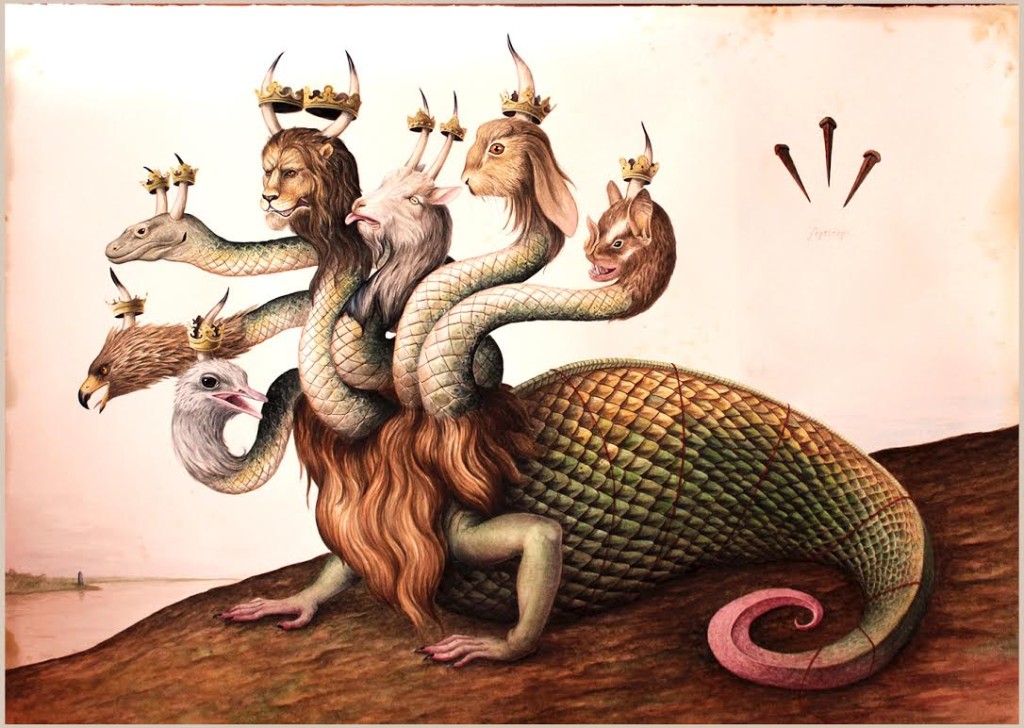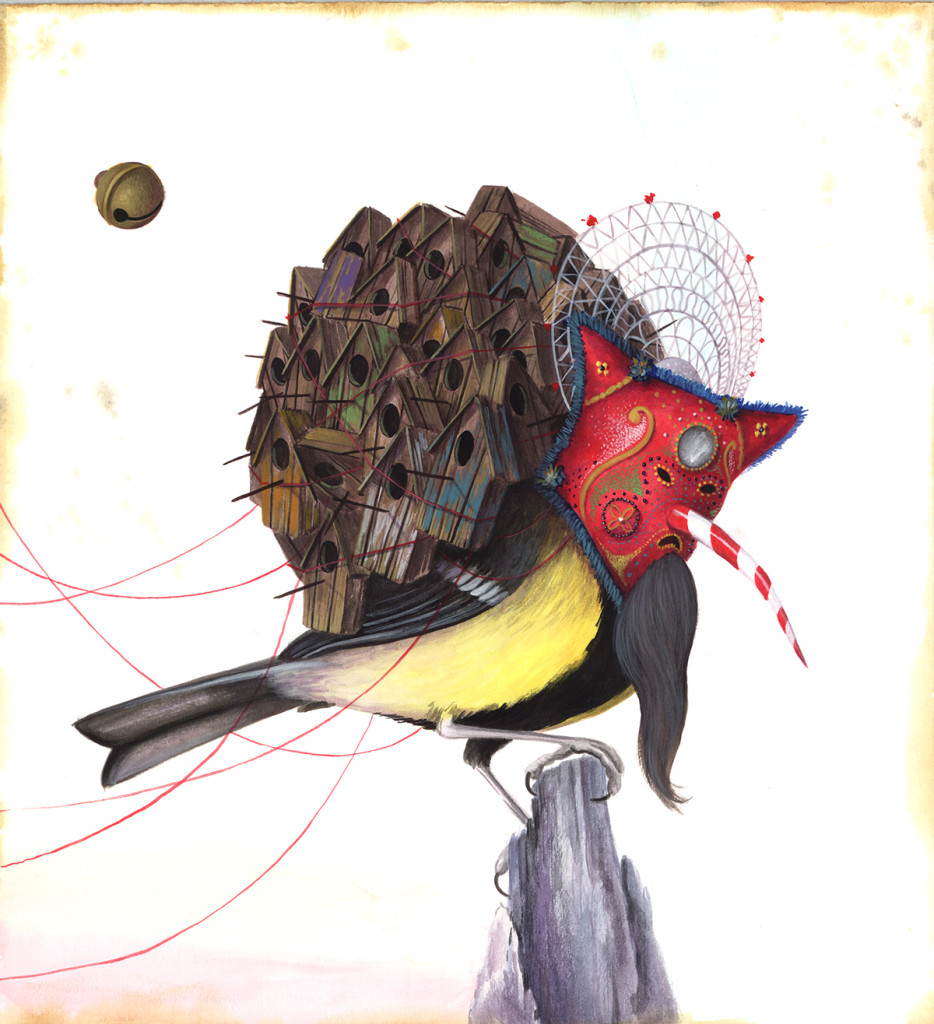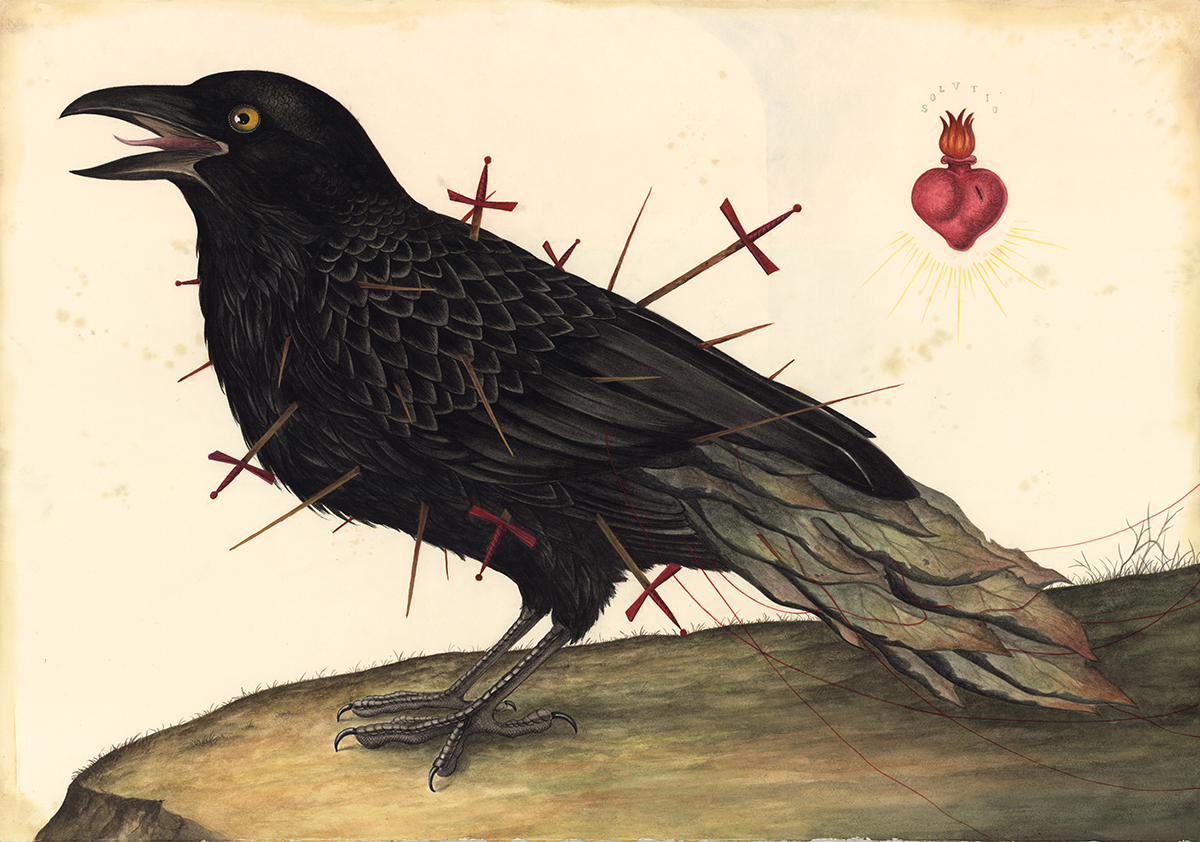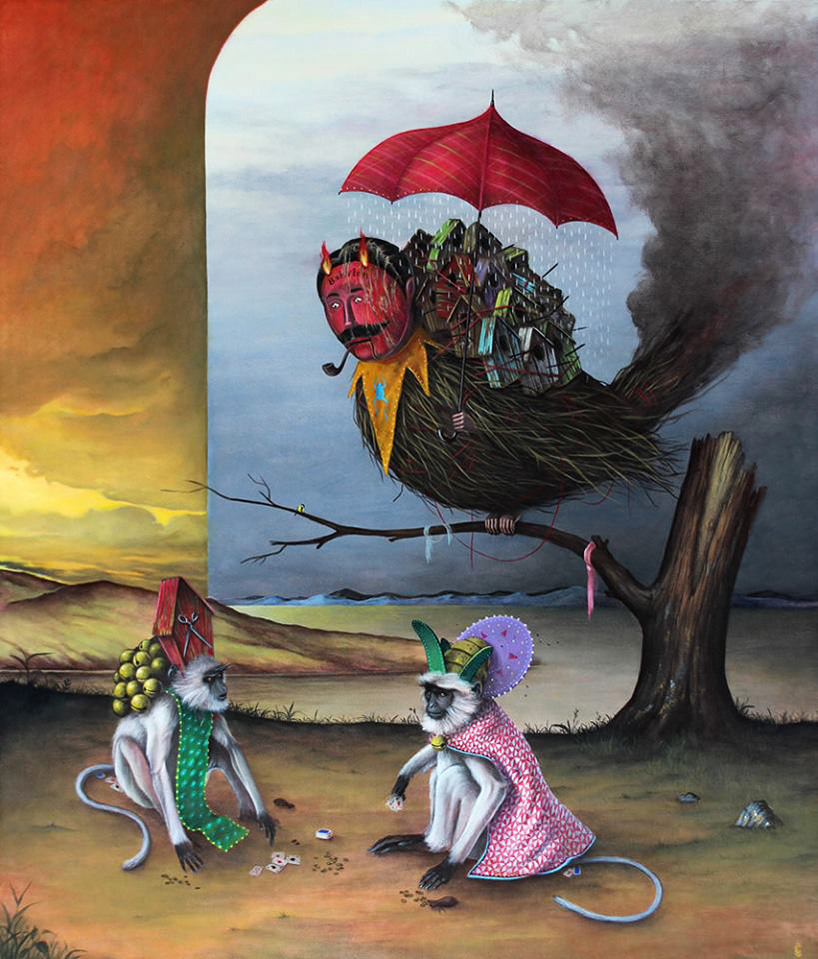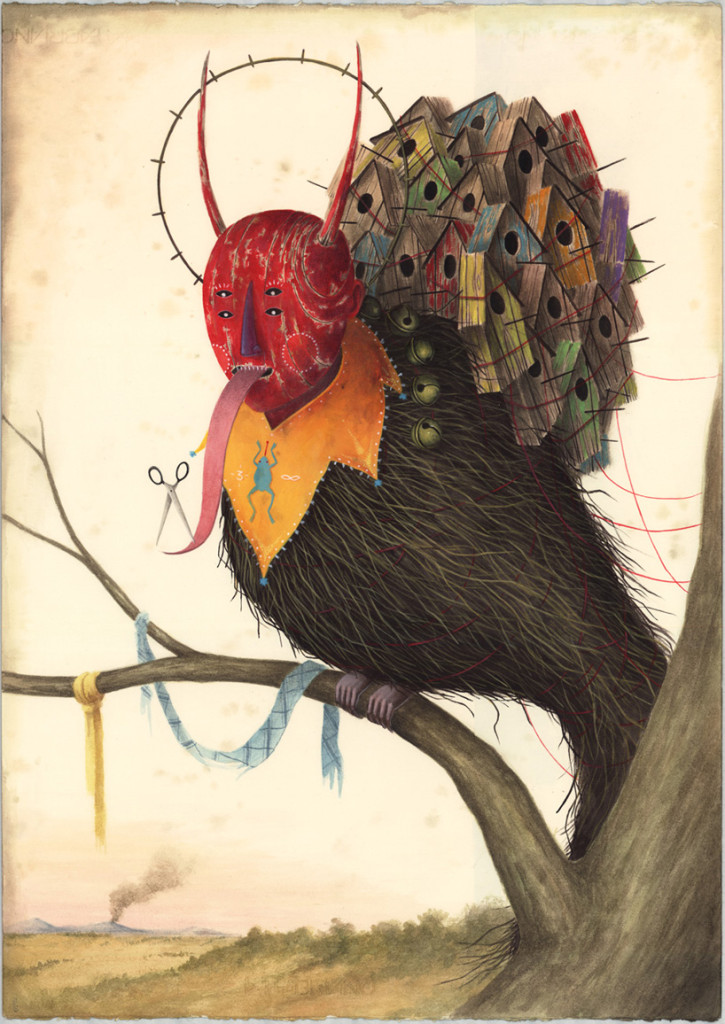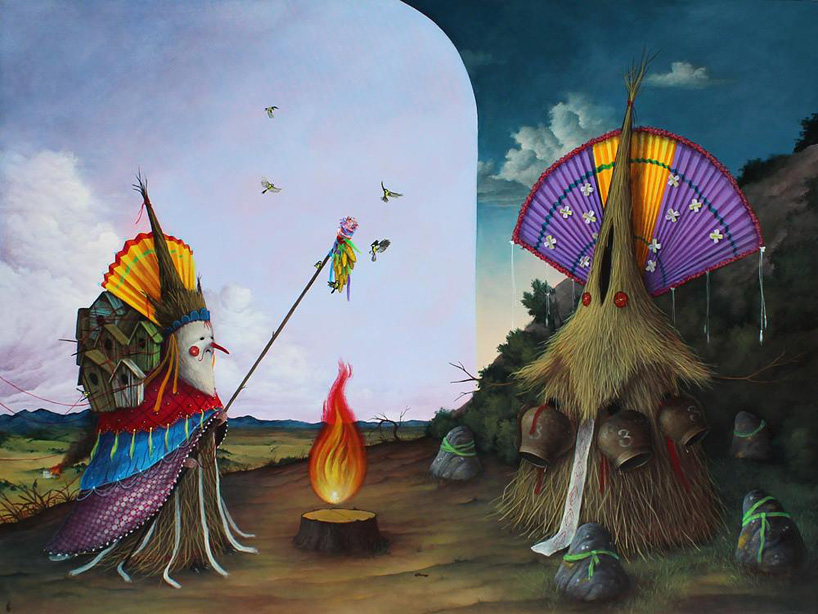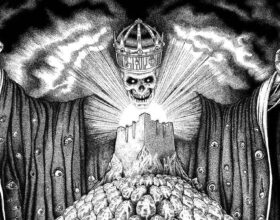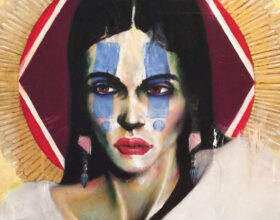Stephen Romano Gallery in New York will be presenting El Gato Chimney’s United States debut solo exhibition, De Rerum Natura.
El Gato Chimney’s “DE RERUM NATURA”
Opening Reception:
March 5, 2015 | 6 -9PM
Exhibition Dates:
March 5, 2015 – April 30, 2015
Stephen Romano Gallery
111 Front Street suite 208 & 202
Brooklyn, NY 11201
Milan based El Gato Chimney is a self-taught artist with a background in street art, which reflects wonderfully in much earlier works, but the works of De Rerum Natura have veered away from the lowbrow distinction of street art and reflect a realist depiction of the amalgamated hysteria of cognitive dualism. One way of defining this is describing the works as surreal. But surreal is a vague term and often implies a sense of irrationality, which then translates into a whimsical narrative created without intention.
The works in De Rerum Natura clearly have intention in their composition. The animals are fantastic hybrids of species that are fusions of intellectual concepts and spiritual archetypes. Thus, a strong use of symbolism is incorporated into the works to enhance the central figure’s emblematic raison d’etre. I wouldn’t define De Rerum Natura so much as surreal as I would alchemical. Again, the idea of surrealism often denotes randomness and irrationality. And like the uninitiated who see images of the occult as nonsensical phantasmagorias that lack the nurturing of a disciplined aesthetic master, one might similarly look upon the works of El Gato Chimney without considering the deeper philosophy inherit within the work. For the initiated, the mysteries of the occult are revealed and what appears surreal to the common mind becomes an alchemical tool with purpose in its placement.
The very borders of the paintings resemble the antiquated pages of a codex illuminated with a pictorial spell. The soft hues of watercolor and pencil keep the image from rising above the sepia surface of the canvas. De Rerum Natura, The Nature of Things, a 1st century BC Roman poem written by Lucretius, is to be understood, as it is depicted in the paintings, as an exploration of the nature between man and soul, the material and the spiritual, the divine and the mundane. In El Gato’s Speak the Truth an opened pair of scissors come down on the tongue of a mystical fowl. It is truth that cuts through ignorance and divides reality from illusion. It is to be further understood that El Gato’s De Rerum Natura, in its depiction of a conversation on the nature of things, is to separate illusion from truth by presenting to us familiar forms that we have never seen before.
In De Rerum Natura the medium between the terrestrial and the celestial is depicted as a bird, an animal that goes between both planes of reality at will. Upon the backs of many of these birds is a community of houses, perhaps signifying the unsteadiness of life and how one’s shelter can abruptly change, or that one can take their sense of shelter wherever they go. Home is where the heart is, as it is said. But one will notice that this sense of security is challenged by the presence of fire. Fire is a significant alchemical symbol, generally represented as one’s will. Fire is also representative of transformation, as fire turns form, representing the terrestrial, into smoke, the celestial.
In the interview below El Gato Chimney takes us beyond the surrealism of his work to present a deeper understanding of its alchemical purpose.
Please invite us into De Rerum Natura. What is the world of De Rerum Natura that you have created?
The universe I portray is never as it seems at first glance, it is up to the viewer to decipher the symbols and archetypes through their own subjective experience as their guide. My sources draw from alchemy, European folklore, Oceanic tribal imagery, and integrating hidden symbols and images that perhaps are missed upon the first viewing. I also fill the works with clues and appeal to the viewer’s imagination and sensibility, keys of interpretation of the modern world.
For those who are familiar with your previous works, what evolution are we seeing in De Rerum Natura from let’s say your shows Crossroads or Metaphysics Paths?
In De Rerum Natura I am introducing a new body of works with a different approach to formal considerations, but conceptually similar to my previous works. I don’t work thinking about the compositions, I assemble the elements that come to me directly. I don’t reference completed sketches, I let my ideas flow while I work. I think of a subject and then add elements that I find complementary or sometimes conflicting with the subject—elements that I have uncovered in my previous work. The themes of magic, popular folklore and shamanism are still the focus of my investigation, but for this exhibition I chose to concentrate on the subjects and their related symbolism.
The motion of flight is prevalent in your work, and I could suggest that it represents transcendence. But at the same time there is not a negation of earth bound material. Could you discuss the nature of dualism in your work?
It’s definitely a very important concept in my work. I believe they are both things and it depends on how we deal with life and the crossroads that this puts in front of us. As many of the symbols I use are ambiguous, the viewer has to empower them with their own subjective meaning. They in a sense create their own personal balance that is resultant from this dualism. Air and earth are the most important elements for humans: they allow us to live, even if they are contrasting, and this is what I want to point out in the art.
I’ve noticed in earlier works, such as The Horn, there appears to be a more contemporary illustrative lean, but these newer works almost resemble the realist imagery of natural or scientific illustrations.
When I decided to work on large-format paper, the subject of animals came to me naturally. I am inspired by Ulisse Aldovrandi’s naturalist works that I often had the pleasure to observe here in Italy. I am fascinated by the old-time feeling of these works, and the clear connotation of natural illustrations help increase the sensation of estrangement, the main concept I chose to explore for this show. In terms of contemporary artists who I think use these approaches effectively, I could point out Martin Wittfooth, Stephan Doitschinoff, Rithika Merchant, Mu Pan and Matthew Couper.
I am curious to know more about your background as a street artist. Could you tell me about how your philosophy as a graffiti and street artist developed and became what it is today?
I did graffiti between 96, when I was 16 until 2000. I evolved into what others are now calling street art using stickers, posters, wall painting without letters, etc.
What I find interesting about graffiti art is that it has a punk philosophy of marring the image of a social construct. Abstraction and surrealism in a similar way also disfigure natural form or what is perceived as an ideal form. The effect of this is a shock to the psyche and ego. Would you consider your work as a sort of psychic deconstruction?
I always lived them as forms of aggregation and sharing, as with Hip Hop and punk. Also, working with certain artists improved my skills, since I am self-taught. Others before me have tried to move towards understanding our human reality through art. But my work seeks to portray the fact that we will never totally understand this reality; that this reality is filled with magic, and realizing this magic means we are able to become part of our own working definition of “ideal”. An ideal that is beautifully static and always changing, a fact of life that humanity accepts with difficulty and opposition. We seek out theories and scientific proofs. My work seeks to embrace the magic, the unexplained, and the fact that there is no ideal.
You’ve incorporated a great deal of alchemical and occult imagery into your work. I would assume you also practice and study similar subject matters. What is it that you have found in art that makes painting a vessel to channel these archetypes?
I paint because it is through painting and this medium’s ability to breathe new life into old experiences and other times. Painting is natural to me, though I rightfully fear the effort of painting because it is always new to me. The life that is given by the paint brush to my works also gives me the chance to be a part of this magic that the natural world holds. Man does not understand the natural world entirely and maybe never will because if we understood it, we could control it. Man fears what it does not control. My paintings reveal this side of nature, unrestrained, wild. The natural world is free in ways that man is not, but we deeply seek this freedom and so we, and I as the painter am inevitably drawn to it.
De Rerum Natura, The Real Thing, is far from works of realism in concept. What essence are you depicting in these works?
The question becomes what is “real”? Reality is what we make of it and within society’s social constructs we become too boxed in with our perceptions of the world around us. I want to challenge my viewers to see that what is real is only a construct of the mind. That truth is not a synonym for existence.
I’ve noticed that in these works there are no human beings. The forms are animals, hybrids really, that seem to bear the burden of a purpose. What are the purposes of these creatures?
In my works there are never human beings. Even when they seem to be present, you can never be sure of it. Animals populated the earth way before our time. They have an innate ancestral force, and the same hybrids I depict populate human unconscious since the olden days. If I were to use humans in my art we would see them too plainly, with too much of a sense of familiarity and empathy. We think we understand our existence perfectly and I don’t agree with the latter. I use animals because they are creatures that we don’t understand but yet can view them with fascination and awe. I want my viewers to have a clean slate on which to re-write, scribble on and cross out what we hold to be our current understanding of our place in the cosmos.
In your works I see both tribal spiritualism as well as Judaic based iconography. What connection are you exploring between Western consciousness and what might be considered “pagan” or tribal consciousness?
Everything is connected, we often forget our origins are pagan. I am Italian and Christianity is very important in this country. Many pagan beliefs have been turned into Christian to have a continuity. I find this great, because it keeps alive costumes and traditions that would otherwise get lost. I have always been fascinated with the elements of tribal consciousness that are so far removed from that of western consciousness. They put into ritual and belief what westerners would deem “naive” or “crazy”. But this very sense of hierarchical understanding that westerners seem to have put themselves at the top of reveals how disenchanted our world has become. I value that tribal consciousness can see and act upon the magic that western consciousness has taken out of the world. They see what is invisible to the masses.
Abstract spiritualism seems to be a theme growing stronger in artwork, or perhaps it always has had a presence. What would you say is happening in the mass social consciousness that is being reflected in works such as yours?
I do believe that we as humanity have begun to accept this magic that the natural world holds in all things unanswered. This magic is one that we will not fully understand and this shift in consciousness is one that is moving towards seeing the beauty in what is, not what we make or mold something to be. We are moving back towards our roots, to a time where humans just were a part of the world, couldn’t explain natural phenomena and didn’t need clear definitions of beauty. We saw all with awe and reverence for creation that we could never trump or be responsible for.
Do you feel classical religious symbols and archetypes are losing meaning through abstraction or are they taking on a new form?
These symbols and archetypes will always maintain their religious truths. What is changing through abstraction is the scope and perspective from which we seem them from. They will always hold onto their magical charge because that is their nature, whether we recognize and are conscious of this magic or not, is dictated by the frame of mind of which we are approaching them from. They were created by primitive man who saw and understood the world much more differently than we currently do and I am merely continuing their creation. Through abstraction we can begin to subvert society’s binds and to slowly redress our prejudices to see these symbols for what they once were.
Each character in the paintings appears to be on a journey. In fact, coming to a crossroads or going on a sort of hero’s journey is a theme within your work. Could you please explain more about the narrative of De Rerum Natura?
YES, these characters are indeed on journeys. What that means then is that I don’t know where they have started from or where they will end up. When I depict them, I depict them as they are, on the road and in the mix. This is the narrative of De Rerum Natura, a fluid journey that is constantly changing its direction because these characters are too changing as they journey, with every step, or flap of their wings.
I can see that the occult, alchemy, folklore, and myths inspired you, but what particular resources and references did you draw direct inspiration from?
What I created isn’t influenced by fantasy but instead by this folklore that you mention. I have my own personal mythology, its roots run deep back into our history—a history that has evolved as society has, as we have moved out of the forests and into our cities and losing sight of the fact that the tales of folklore were once our realities. I am inspired by what was and what still could be if we can begin to shed this skin that has bound us too tightly to seeing the natural to be something that is conquered.
How are these concepts conceived? I would imagine that with dealing with articles of intention there is a process of aligning your will with your imagination.
I do a lot of studying, researching, delving into the past and exploring what kind of literature and thoughts are already out there, what kind of art has been created during that time, etc, and in what frame of mind. As I am in search of understanding of a different time, leaping into the past I try to be aware of what is currently influencing me when I approach it. Looking backwards makes me more aware of the present because these are our roots, our fundamental beings, our foundations.
One reoccurring image throughout your work is a pair of scissors, which is a sharp object that divides—which further enhances the concept.
Scissors are two blades whose purpose to divide something. What am I dividing in my work? You tell me. What does cut mean to you? What do you as the viewer need to divide so that you may better understand. Deconstructing to construct, not understanding to understand. These blades are there for my viewers to wield, what they cut relies on their current journey and where they are on their own path. That’s the thing about art, when a piece speaks to you, you have to decide why it does, and what you want it to say.
There is a saying teachers use about how their students are really teaching them. From the responses you’ve had from your audience, have they revealed insights into your work that you had not seen before?
This happens very often and I love this process. Even this interview has forced me to approach my work differently and to think differently about it. I often get asked to give full explanations of my works, but I never do, because I am afraid I would influence the process of elaboration of the observer. I am always eager to learn what my work seems to have communicated to others, how they interpret my work and what they can apply to their own lives. Feelings are subjective. How my art molds the feelings of others helps me to further understand my artwork and from there I can begin to evolve as an artist.
Do you feel that you are still discovering a voice or an essential message that has yet to be revealed? Essentially what I’m asking, is are you actively searching for either a particular revelation or working toward a specific goal within your spiritual or art career?
I am constantly trying to create “mystery”. What I mean by that is a genuine fascination and appreciation for all the phenomena that go unexplained. In creating and forcing myself to be open to working with this element of life, I am having to overcome my limits and my own conceptions of what I think I know about the world. I am coming to terms with the unknown and in doing so I am able to simply be a part of the world, see things with the magic they are indeed imbued with. Surely though, I look forward to discovering and constantly arriving at points of awe within my career, as an artist and as a human being and what exactly that means in this world today.
Are there any ongoing or future projects that you have in the works? What can we expect from you in the future?
Lately I feel the need to create large-format works and to devote my time to sculpture, so I think this could be my future direction, but who knows? After this exhibition at Stephen Romano Gallery I will be participating with something different for the inaugural show at his new space in May. I am also in discussion with Stephen about producing an artist’s book, distinct from the catalog for this exhibition. Like my work, I too am a fluid being, always changing directions based on the person I am currently when my hands meet paintbrushes or any other mediums they can wield. I don’t use maps to get to my destinations per say, I like to let things evolve on their own. All I do know is that you can expect to see me at work and becoming the artist I aspire to be.
I want to thank you so much for these questions, they have revealed volumes to me about my work, and also for the support you all at beautiful.bizarre showed for my art. I also want to thank everyone who had the patience to sit and read through all my answers, it took me a while to find the right words. I hope I was able to explain my art, and, at the same time, to have piqued your interest, because curiosity and its subsequent research are great and I highly encourage that we all pursue them. Thank you to Lindsey Okubo from Stephen Romano Gallery for her assistance in helping me articulate my responses in English.


